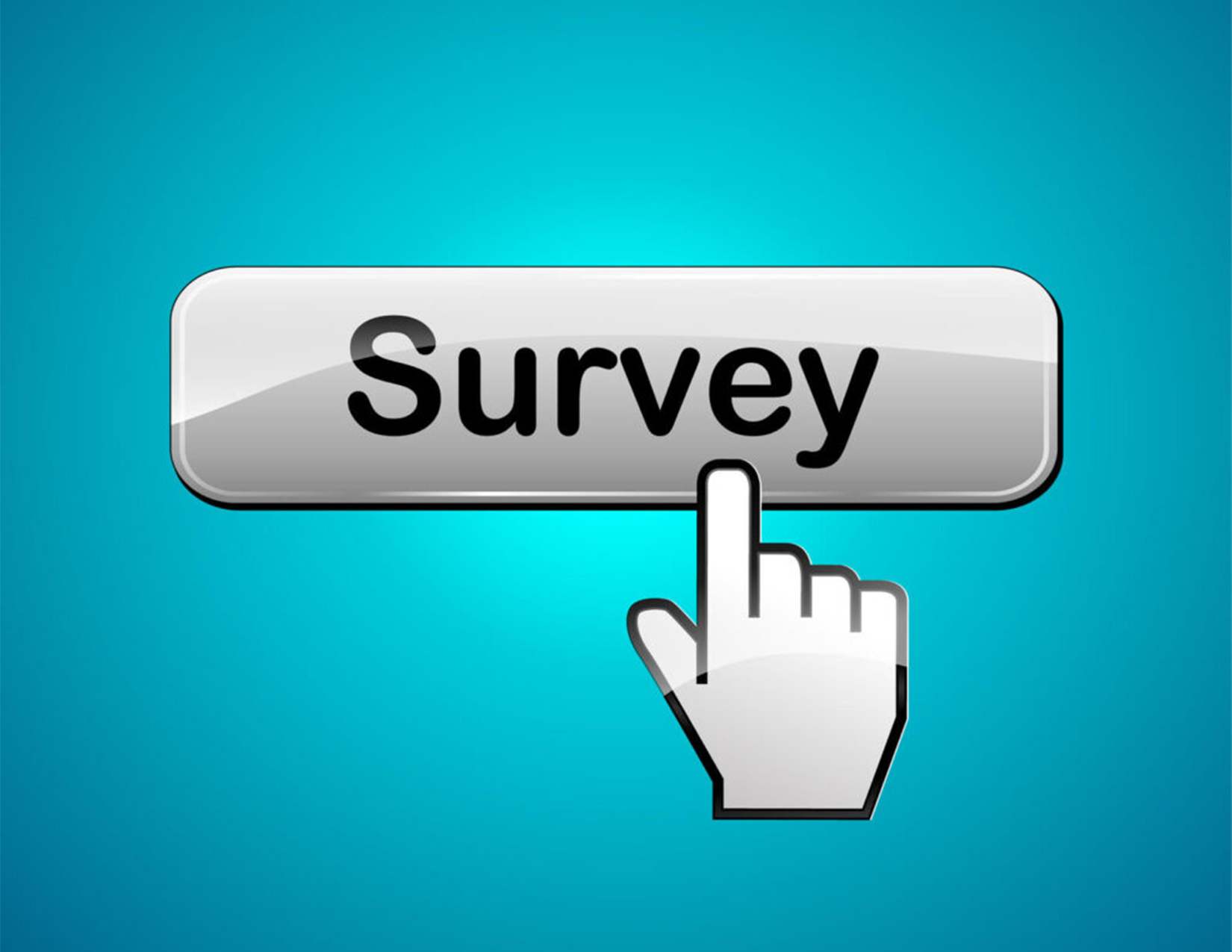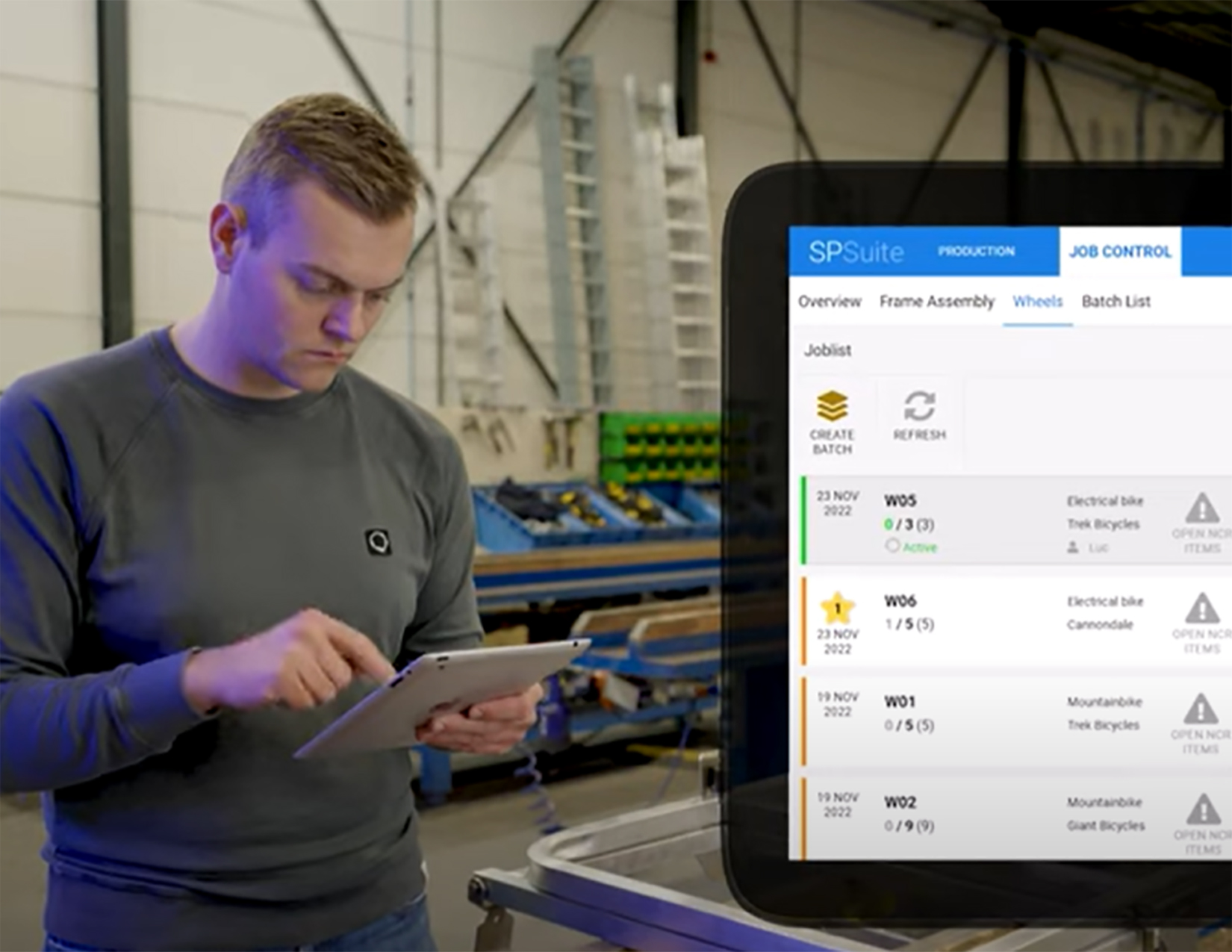Modern Operations Software
The founder, Eric Klement, is ex-Infor and saw a need for simple MES solutions for smaller or less complex manufacturers. The goal is to implement the JobControl and StockControl apps in three days, which is possible because the apps are intuitive and user-friendly. This combination of speed and ease enables quick time to value.
The software is based on REST APIs and the Infor OS gateway. These make it flexible, modular, lightweight, easy to connect, and modern. Traditional software providers may struggle to match the performance of REST APIs with older technology.
Implementation Speed
Preconfigured apps are a crucial foundation for the three-to-five-day implementation time. Yet that’s only one component. A joint workshop between the customer and software provider’s team sets out needs, processes, and priorities. Pre-built connectors to Infor LN ERP for data the app needs and for ERP updates of actual shop activity accelerate implementation, too.
Smart Production Solutions and Infor train the manufacturer’s trainers to sustain the system. The system is configurable to support non-IT professionals in configuring and maintaining the software. All customers are always on the same instance and version, with no possibility of software that gets outdated.
Intuitive
The software shows frontline workers precisely what they need for their next task on a touch screen. Each person sees the screen in their native language. Companies can decide whether every workstation will have a screen or whether workers will share the screens. Licensing is by device, but at $65/device/month, most companies will opt to have several screens to prevent work slow-down when workers queue up to await their turn at the software.
Production work orders are the basis of the JobControl section. The status of the work order is always available. Color coding can show what material is available and what is not. In addition to setup, start, machine, and label printing, the operator can see reports such as OEE with a button click. Deviations can alert a supervisor via email.
StockControl focuses on warehouse activities such as goods receiving, picking, and kitting for orders. Matching quantities to purchase order quantities enables ERP updates. If there is damage, the worker can take a picture and send the exception back to ERP. The goal is to keep frontline employees in the factory and have procurement teams talk to suppliers if needed.

Smart Production Solutions aims to complement ERP, not overlap with it. The work orders and, if applicable, serial numbers for parts, subassemblies, and the final product, come from ERP into the apps. This enables full MES track and trace, yet a light footprint and applicability to smaller ERP customers. The approach has paid off, as JobControl and StockControl are available on the Infor price list and in their MarketPlace.
Lower-Risk with Parent
Smart Production Solutions is part of the Otherside Software group. Otherside Software is a Dutch software development company. With over 150 employees and a yearly growth of >20% since 2015, the group bootstrapped the company into a mature software company with a proven track record. The group has its own SaaS platform.
This SaaS platform delivers security, testing, and an environment that enables subsidiary companies to offer credible SaaS apps. With the infrastructure shared, companies such as Smart Production Solutions can focus on their areas of domain expertise.
Moving Ahead
The company has primarily focused on selling in Europe, where its headquarters are. However, with Infor’s worldwide presence, they are also expanding into Asia and the Americas. Infor provides first—and second-level support for customers. Infor partners are starting to be trained on the JobControl and StockControl apps. The company hopes to forge relationships to extend other ERP platforms over time.
Thank you, Eric Klement, CEO, for taking the time to get us up to speed on your lightweight approach to extending ERP for production and shop floor inventory operations. We look forward to following your progress in the market.

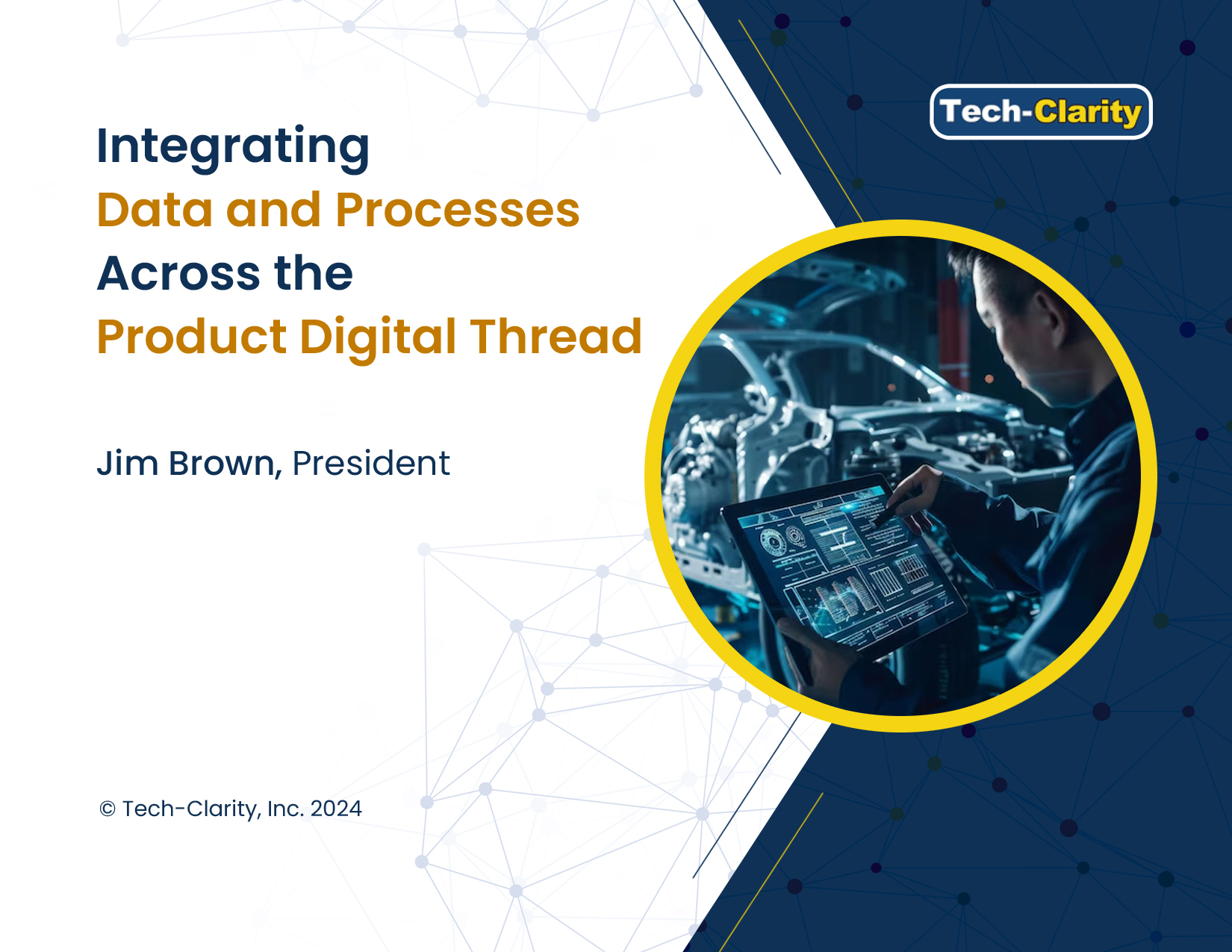 What value does the product digital thread offer manufacturers? How important is integrating data and systems across the digital thread to achieving that value? We set out to better understand the value of product digital thread integration and how top performing companies overcome implementation, operation, and maintenance challenges to achieve it. Did we find the magic bullet to effective product digital integration? The answer may surprise you.
What value does the product digital thread offer manufacturers? How important is integrating data and systems across the digital thread to achieving that value? We set out to better understand the value of product digital thread integration and how top performing companies overcome implementation, operation, and maintenance challenges to achieve it. Did we find the magic bullet to effective product digital integration? The answer may surprise you. 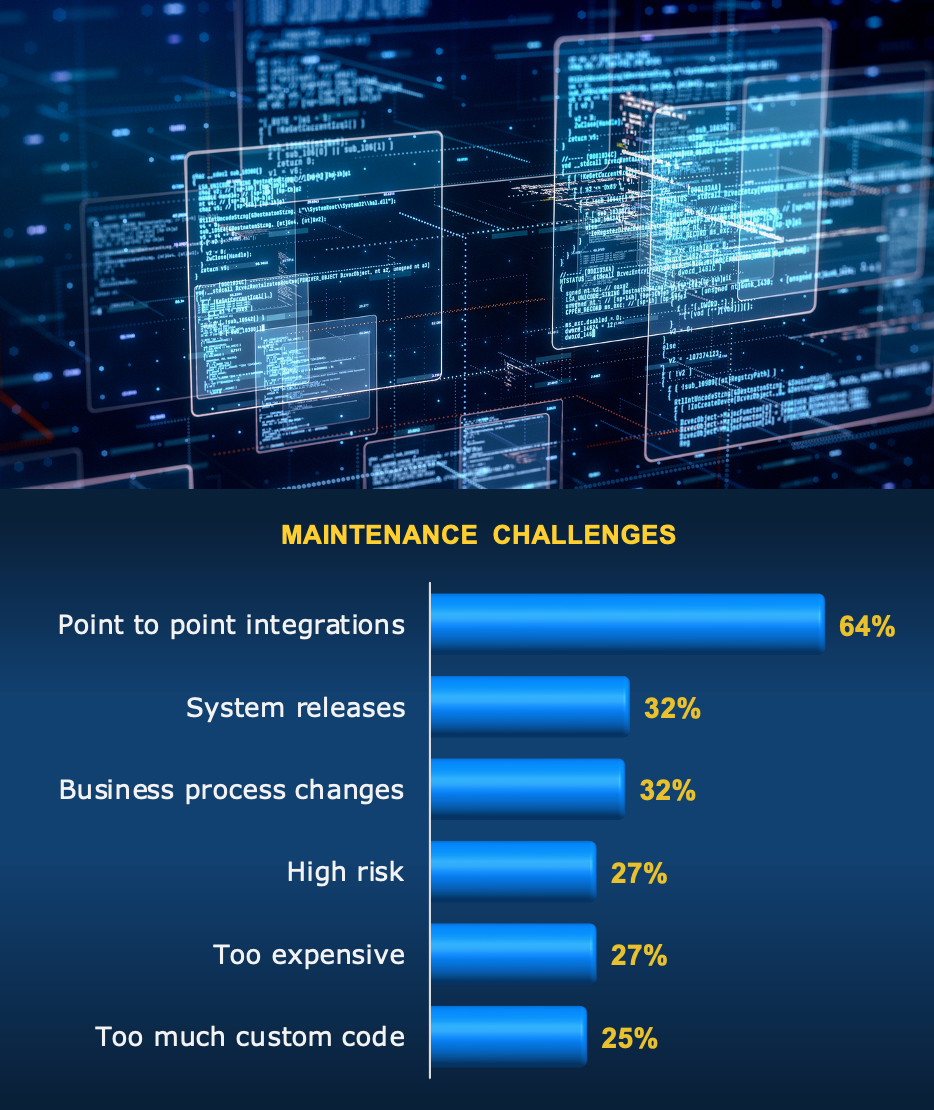 Challenges Impacting the Maintenance Lifecycle
Implementing integration across data and applications along the digital thread is only the first step. Integration requires care and feeding to keep it running. It's important to acknowledge that, like the products they manufacture, integration involves many moving parts, at least metaphorically. Manufacturers report that managing change is difficult, including both keeping up with releases for different systems and adjusting as business processes change.
Manufacturers also point to challenges related to continued cost and business risk in the maintenance phase. Additionally, about one-half reported that integration challenges disrupt operationsand that validating integration consumes about 25% of systems upgrade efforts. There is clearly room for improvement, and it's no surprise that manufacturers lack the integration they need.
Maintenance Challenges Vary by Approach
Some integration approaches lead to more maintenance difficulties than others. For example, about two-thirds of companies report "point to point" integration as a top challenge, and about one-quarter report that too much custom code is an issue. These approaches are more prone to require manual updates when underlying systems or processes change. We'll look at manufacturers' approaches to integrate their product digital threads shortly.
Challenges Impacting the Maintenance Lifecycle
Implementing integration across data and applications along the digital thread is only the first step. Integration requires care and feeding to keep it running. It's important to acknowledge that, like the products they manufacture, integration involves many moving parts, at least metaphorically. Manufacturers report that managing change is difficult, including both keeping up with releases for different systems and adjusting as business processes change.
Manufacturers also point to challenges related to continued cost and business risk in the maintenance phase. Additionally, about one-half reported that integration challenges disrupt operationsand that validating integration consumes about 25% of systems upgrade efforts. There is clearly room for improvement, and it's no surprise that manufacturers lack the integration they need.
Maintenance Challenges Vary by Approach
Some integration approaches lead to more maintenance difficulties than others. For example, about two-thirds of companies report "point to point" integration as a top challenge, and about one-quarter report that too much custom code is an issue. These approaches are more prone to require manual updates when underlying systems or processes change. We'll look at manufacturers' approaches to integrate their product digital threads shortly.
 The product digital thread is very important or critical to business success and profitability. Manufacturers are turning to the digital thread for a variety of significant business benefits, including product quality, better decision-making, engineering efficiency, product development speed, and product traceability.
The Product Digital Thread Requires Assembly
The product digital thread doesn't come in a single system. It lies across an ecosystem of applications and data sources. Manufacturers recognize the importance of integration to achieve their business goals.
Integration is Challenging
Product data is complex and requires technical and business expertise to interpret its meaning and the contextual relationships that make up the product digital thread. The current state of integration leads to data problems and challenges in implementation, operation, and maintenance. These challenges make it harder for manufacturers to achieve their product digital thread goals.
Develop Top Performing Integration Capabilities
The Top Performers, those with better integration capabilities, have accomplished more significant and more enterprise-wide integration. At the same time, they face fewer challenges in all phases of the integration lifecycle, including:
The product digital thread is very important or critical to business success and profitability. Manufacturers are turning to the digital thread for a variety of significant business benefits, including product quality, better decision-making, engineering efficiency, product development speed, and product traceability.
The Product Digital Thread Requires Assembly
The product digital thread doesn't come in a single system. It lies across an ecosystem of applications and data sources. Manufacturers recognize the importance of integration to achieve their business goals.
Integration is Challenging
Product data is complex and requires technical and business expertise to interpret its meaning and the contextual relationships that make up the product digital thread. The current state of integration leads to data problems and challenges in implementation, operation, and maintenance. These challenges make it harder for manufacturers to achieve their product digital thread goals.
Develop Top Performing Integration Capabilities
The Top Performers, those with better integration capabilities, have accomplished more significant and more enterprise-wide integration. At the same time, they face fewer challenges in all phases of the integration lifecycle, including:

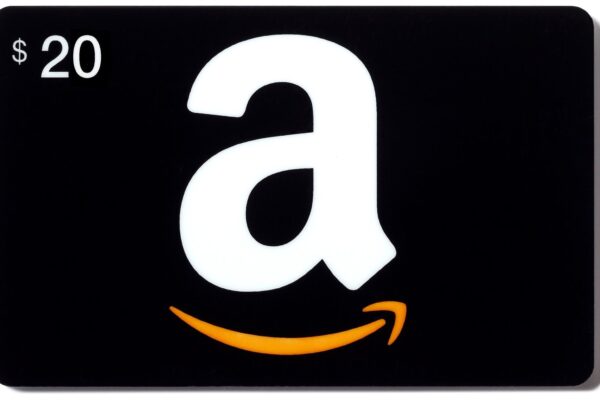 In addition, respondents will be entered into a drawing for one of five $20 Amazon gift cards.*
In addition, respondents will be entered into a drawing for one of five $20 Amazon gift cards.*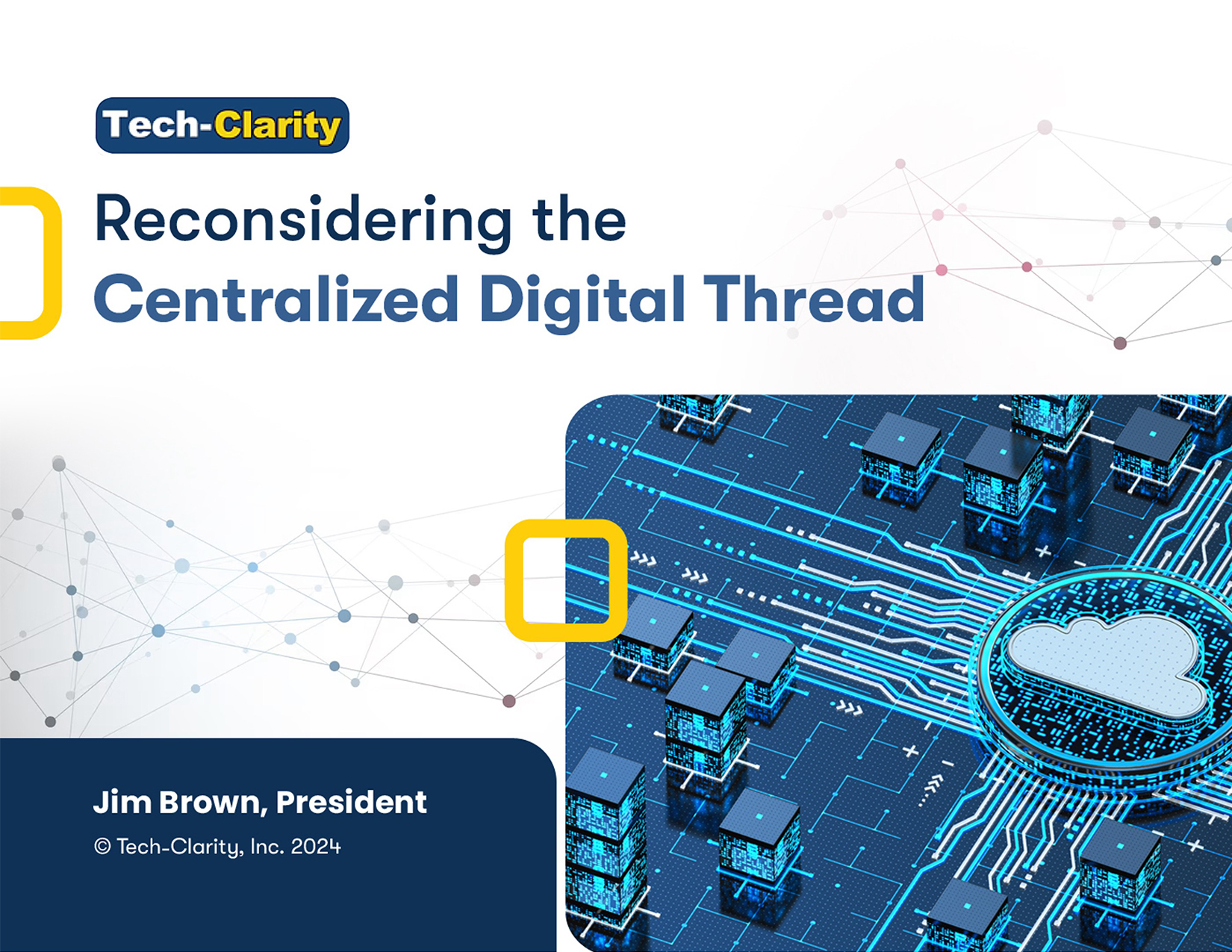 Is it time to rethink the role of PLM in managing the digital thread? Should we evolve beyond the idea of “a single source of truth” and pursue digital thread orchestration to integrate product data and processes, recognizing that the data will span multiple systems? Our latest eBook addresses these questions and more.
Click here for the
Is it time to rethink the role of PLM in managing the digital thread? Should we evolve beyond the idea of “a single source of truth” and pursue digital thread orchestration to integrate product data and processes, recognizing that the data will span multiple systems? Our latest eBook addresses these questions and more.
Click here for the 
 Recognize the False Hope
Let’s face it, the digital thread is now too detailed and complex to be contained in a single system. Individual workgroups and disciplines require specialty design and engineering tools including one or more mechanical CAD (MCAD), electrical CAD (ECAD), and software development kit (SDK) solutions. Beyond these, specialists need best-in-class tools to design and analyze chips, digital communication protocols, interfaces, heat transfer, magnetic interference, and other intricacies of today’s software- and electronics-drive devices.
Each of the tools engineers use creates valuable data. They develop too much detailed information, in varied formats, with their own individual lifecycles, to manage centrally. Instead, engineering teams may consider workgroup orchestration and design data management and centralize only the results. “The PCBAs we design have rich component information, but in the ERP world they are a BOM line item because we manufacture out of house,” says the R&D Director. “But we need to have that information available because we need visibility to the high value components on the board to be able to manage things like component shortages.”
Centralize Selectively for Control
Not all detailed data needs to be centralized and managed, but some information should be centrally available in order to manage change and release management. Take software development as an example. PLM should be concerned with released software but few would suggest it controls software sprints. Instead, PLM can manage the big picture so that device engineers, developers, and manufacturing resources are kept aware of progress and how changes impact different disciplines.
Recognize the False Hope
Let’s face it, the digital thread is now too detailed and complex to be contained in a single system. Individual workgroups and disciplines require specialty design and engineering tools including one or more mechanical CAD (MCAD), electrical CAD (ECAD), and software development kit (SDK) solutions. Beyond these, specialists need best-in-class tools to design and analyze chips, digital communication protocols, interfaces, heat transfer, magnetic interference, and other intricacies of today’s software- and electronics-drive devices.
Each of the tools engineers use creates valuable data. They develop too much detailed information, in varied formats, with their own individual lifecycles, to manage centrally. Instead, engineering teams may consider workgroup orchestration and design data management and centralize only the results. “The PCBAs we design have rich component information, but in the ERP world they are a BOM line item because we manufacture out of house,” says the R&D Director. “But we need to have that information available because we need visibility to the high value components on the board to be able to manage things like component shortages.”
Centralize Selectively for Control
Not all detailed data needs to be centralized and managed, but some information should be centrally available in order to manage change and release management. Take software development as an example. PLM should be concerned with released software but few would suggest it controls software sprints. Instead, PLM can manage the big picture so that device engineers, developers, and manufacturing resources are kept aware of progress and how changes impact different disciplines.
 Leverage PLM to Enable Rich Collaboration
When PLM is used as an orchestration tool, it has the right data and context to allow engineers and others to collaborate in the context of their product development projects, products, and releases. PLM can act as the place where designs from multiple disciplines come together. Centralizing the right data allows design teams to review the implications of their designs in the context of other designers and design disciplines, and a place to work through conflicts and optimize system performance.
PLM can also keep engineers informed of design changes that impact their work. For example, they could get an alert of a changed design through PLM or in a separate tool like Slack. This way, individuals within workgroups, across workgroups, and across the supply chain can be kept in the loop on changes they need to be informed about. PLM should also provide a forum for designers to share their feedback with each other and store that feedback for future reference, for example, for the next revision of the product.
Multidiscipline Collaboration Example
The Director of R&D for the electronic device supplier we interviewed for this research shares an applicable example. “When a PCBA is ready for a revision, it goes to PLM. That’s where the mechanical and electrical designs come together,” explains. “Then our MCAD picks up the PCBA and creates a joint view in our PLM and makes sure the dimensions of the fiberglass work.” Viewing design data in context helps companies uncover clashes or disconnects early to prevent integration mistakes across mechanical, electrical, and software components. It can also help Manufacturing see changes to design files and can provide feedback quickly if there is an issue that impacts manufacturability.
Leverage PLM to Enable Rich Collaboration
When PLM is used as an orchestration tool, it has the right data and context to allow engineers and others to collaborate in the context of their product development projects, products, and releases. PLM can act as the place where designs from multiple disciplines come together. Centralizing the right data allows design teams to review the implications of their designs in the context of other designers and design disciplines, and a place to work through conflicts and optimize system performance.
PLM can also keep engineers informed of design changes that impact their work. For example, they could get an alert of a changed design through PLM or in a separate tool like Slack. This way, individuals within workgroups, across workgroups, and across the supply chain can be kept in the loop on changes they need to be informed about. PLM should also provide a forum for designers to share their feedback with each other and store that feedback for future reference, for example, for the next revision of the product.
Multidiscipline Collaboration Example
The Director of R&D for the electronic device supplier we interviewed for this research shares an applicable example. “When a PCBA is ready for a revision, it goes to PLM. That’s where the mechanical and electrical designs come together,” explains. “Then our MCAD picks up the PCBA and creates a joint view in our PLM and makes sure the dimensions of the fiberglass work.” Viewing design data in context helps companies uncover clashes or disconnects early to prevent integration mistakes across mechanical, electrical, and software components. It can also help Manufacturing see changes to design files and can provide feedback quickly if there is an issue that impacts manufacturability.
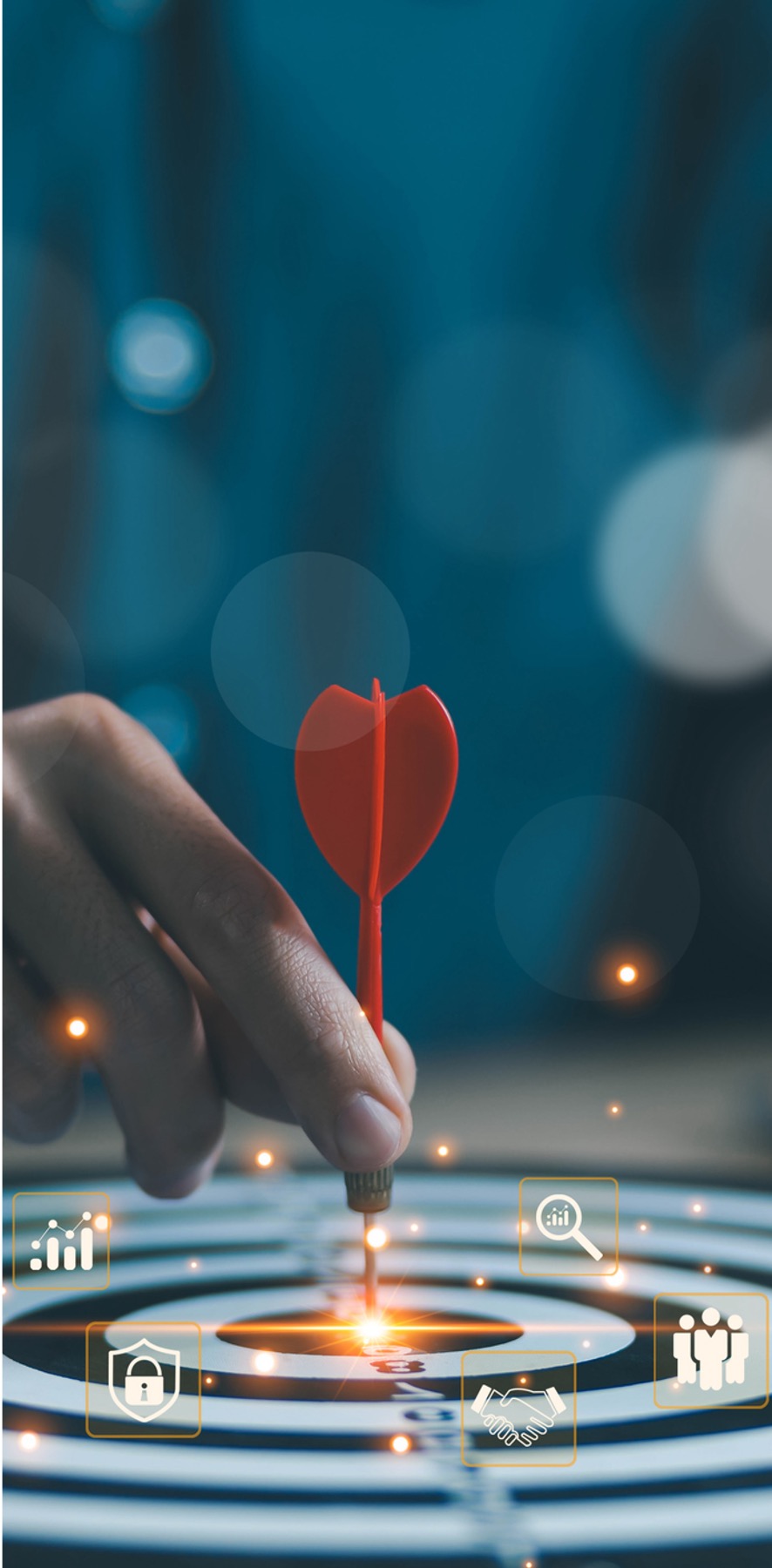 PLM can serve as a system for orchestration, but let’s not forget it provides value on its own. PLM has expanded in multiple dimensions and although today’s PLM offerings can’t do everything for everyone, they provide extensive functionality that adds value to the business. Our research shows that PLM delivers significant operational value by streamlining the flow of information and processes. “We implemented automation in PLM that reduces tedious, unproductive tasks. Our engineers are more productive,” explains the VP of Engineering for the modular office device manufacturer. “We now have a much better single point of truth with PLM integrated, which makes implementing changes clearer. We likely could not have been successful on some projects without it.”
Take Advantage of PLM’s Business Value
These operational improvements lead to both top-line and bottom-line business benefits. These benefits are only extended as PLM plays a broader orchestration role. The Director of R&D for the electronic device supplier shares an example of both operational and business benefits by allowing them to make better decisions based on the data they need. “Designers can look for a component by searching ERP data for a part to see if it has been used to prevent duplication. We can also better manage the component lifecycle, for example, discovering an end-of-life component, doing a where-used, and assessing whether to make a last-time buy to avoid an expensive R&D board redesign.” Our research confirms the business value, with over one-half of companies reporting faster product development, a similar number achieving better innovation, and one-half sharing PLM improves product quality.
Look Beyond Centralization to Orchestration
It’s time to take advantage of PLM’s operational and business value but also recognize the need for PLM to adopt a new role to orchestrate the digital thread across a diverse ecosystem of tools. The R&D Director for the device supplier sums it up nicely, “When you have multiple teams and multiple tools, you need a PLM tool to create a central view of components and processes in the digital thread.”
Click here for the
PLM can serve as a system for orchestration, but let’s not forget it provides value on its own. PLM has expanded in multiple dimensions and although today’s PLM offerings can’t do everything for everyone, they provide extensive functionality that adds value to the business. Our research shows that PLM delivers significant operational value by streamlining the flow of information and processes. “We implemented automation in PLM that reduces tedious, unproductive tasks. Our engineers are more productive,” explains the VP of Engineering for the modular office device manufacturer. “We now have a much better single point of truth with PLM integrated, which makes implementing changes clearer. We likely could not have been successful on some projects without it.”
Take Advantage of PLM’s Business Value
These operational improvements lead to both top-line and bottom-line business benefits. These benefits are only extended as PLM plays a broader orchestration role. The Director of R&D for the electronic device supplier shares an example of both operational and business benefits by allowing them to make better decisions based on the data they need. “Designers can look for a component by searching ERP data for a part to see if it has been used to prevent duplication. We can also better manage the component lifecycle, for example, discovering an end-of-life component, doing a where-used, and assessing whether to make a last-time buy to avoid an expensive R&D board redesign.” Our research confirms the business value, with over one-half of companies reporting faster product development, a similar number achieving better innovation, and one-half sharing PLM improves product quality.
Look Beyond Centralization to Orchestration
It’s time to take advantage of PLM’s operational and business value but also recognize the need for PLM to adopt a new role to orchestrate the digital thread across a diverse ecosystem of tools. The R&D Director for the device supplier sums it up nicely, “When you have multiple teams and multiple tools, you need a PLM tool to create a central view of components and processes in the digital thread.”
Click here for the 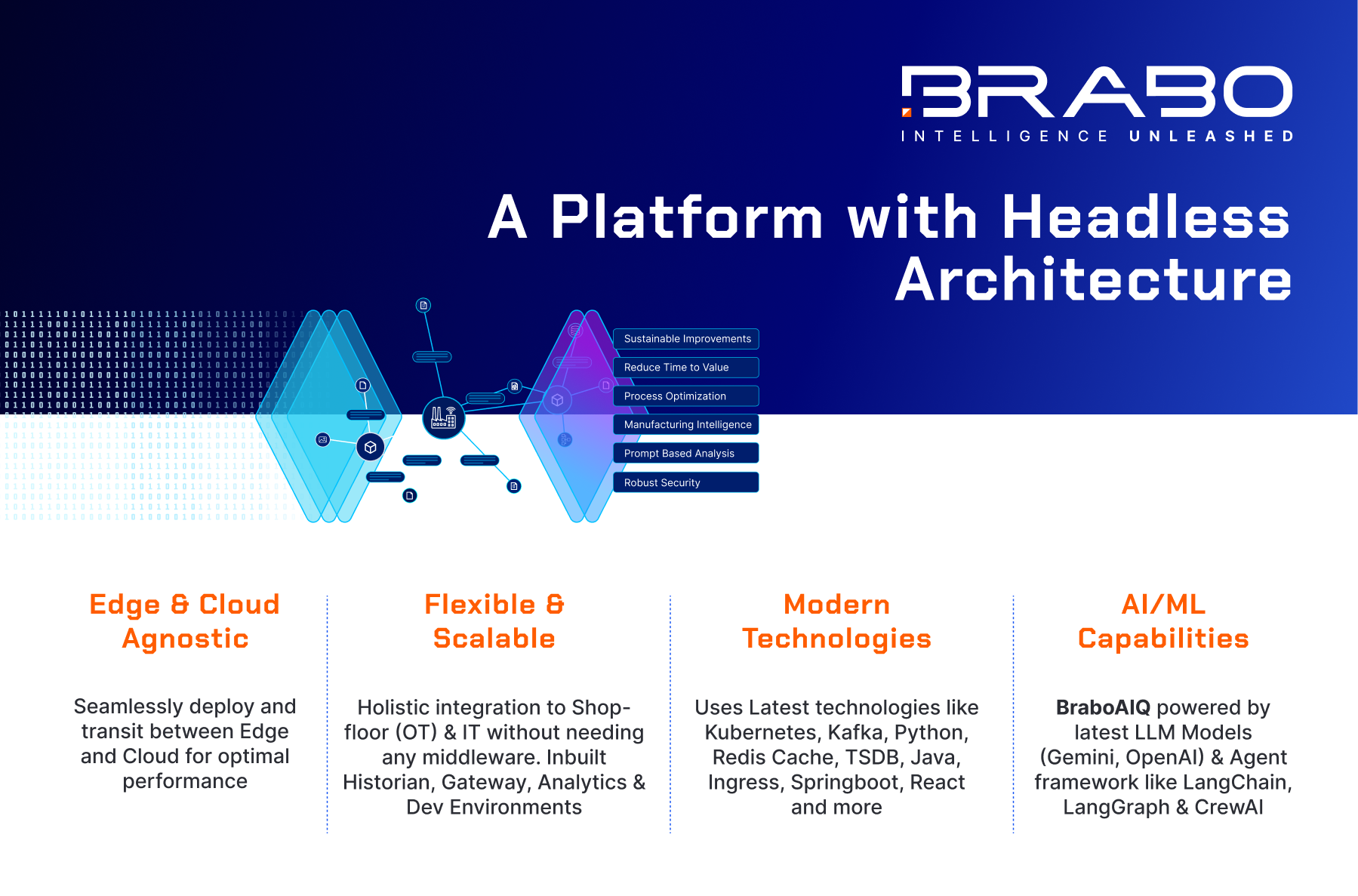


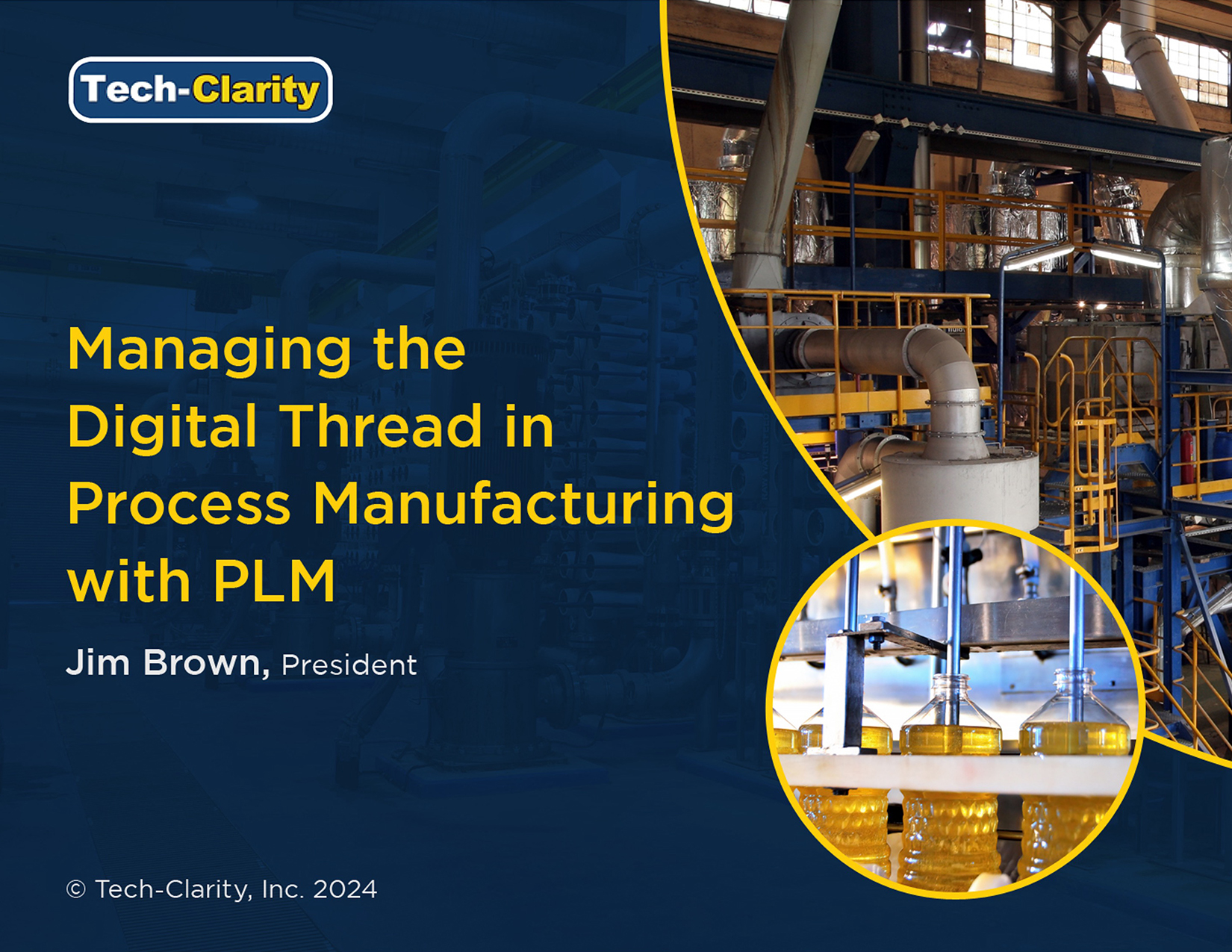 How can process manufacturers, who are traditionally undersupported by PLM offerings, manage their digital threads and bridge the gaps from formulas, to process, to plant, to the supply chain? Where can recipe-driven companies, including those in chemicals, food & beverage, cosmetics, oil & gas, and other related “process industry” companies, turn for PLM?
How can process manufacturers, who are traditionally undersupported by PLM offerings, manage their digital threads and bridge the gaps from formulas, to process, to plant, to the supply chain? Where can recipe-driven companies, including those in chemicals, food & beverage, cosmetics, oil & gas, and other related “process industry” companies, turn for PLM?  System Fundamentals
These capabilities can add significant value to the process industry digital thread. There are other fundamental PLM capabilities that translate well to process industry PLM, such as user and role management, granular security models, workflow management, cloud deployment, and more. Ideally, these are created as services that can be adapted and reused to support and digitally transform the process industries.
System Fundamentals
These capabilities can add significant value to the process industry digital thread. There are other fundamental PLM capabilities that translate well to process industry PLM, such as user and role management, granular security models, workflow management, cloud deployment, and more. Ideally, these are created as services that can be adapted and reused to support and digitally transform the process industries.
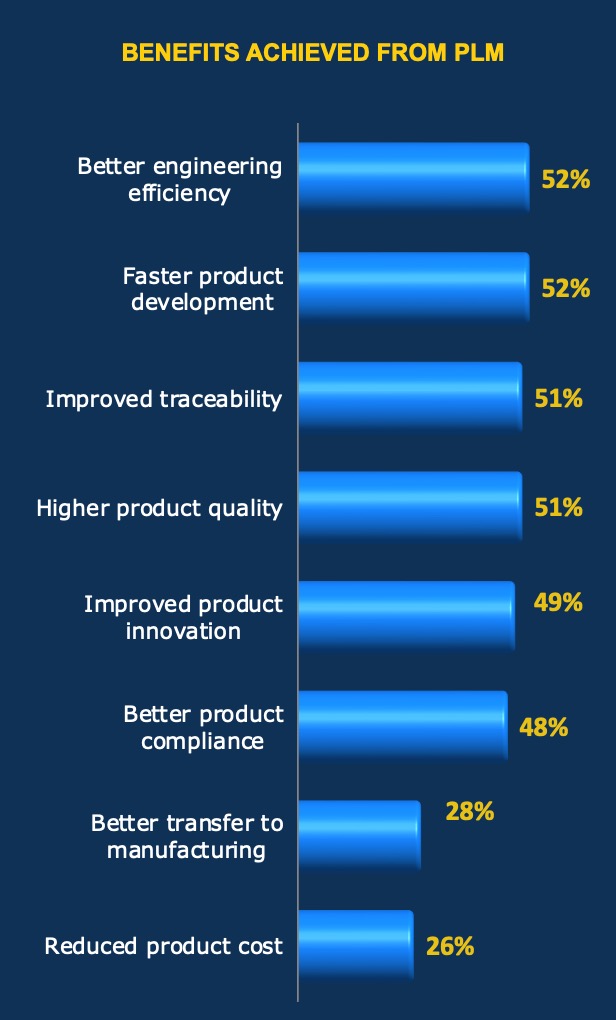 Manufacturers of all kinds can gain significant business value from a trusted digital thread managed by PLM. However, traditional PLM systems were not designed to meet unique process industry needs, let alone specific needs for industries like chemicals or food and beverage.
Traditional PLM capabilities, on the other hand, can support packaging design and BOMs, which follow a discrete model. These systems can also manage the digital thread and digital twin of plants and plant assets.
Look for Flexibility and Adaptability
How do you expand a solution from an 80% fit to a fully capable solution without impacting maintainability and the ability to upgrade? Consider that it might be easier to get from a 60% fit with a solution built on a low-code architecture so you don't create technical debt.
One way to pursue PLM for the process industries is to adopt PLM basics and use low-code to replicate, modify, and augment it to fill the process industry disconnects. This approach offers the fundamentals of PLM for both recipe- and BOM-centric needs in a way that doesn't create unmanageable technical debt.
Get the Right Architecture
When looking at a system to support the process industries, it's essential to consider the architecture of the solution in addition to the capabilities. For example, is it open? Easily integrated? Available on the cloud? Does it offer low-code to make it flexible and maintainable? These are important considerations to get the right combination of capabilities for today and the ability to future-proof the system to support the business of the future.
Gain Business Value
Ultimately, the purpose of selecting and implementing a PLM system is growing business value through higher revenue, greater agility, lower cost, better quality, and increased compliance. PLM delivers proven value, but it's critical for PLM to support the uniqueness of the digital thread in the process industry.
Manufacturers of all kinds can gain significant business value from a trusted digital thread managed by PLM. However, traditional PLM systems were not designed to meet unique process industry needs, let alone specific needs for industries like chemicals or food and beverage.
Traditional PLM capabilities, on the other hand, can support packaging design and BOMs, which follow a discrete model. These systems can also manage the digital thread and digital twin of plants and plant assets.
Look for Flexibility and Adaptability
How do you expand a solution from an 80% fit to a fully capable solution without impacting maintainability and the ability to upgrade? Consider that it might be easier to get from a 60% fit with a solution built on a low-code architecture so you don't create technical debt.
One way to pursue PLM for the process industries is to adopt PLM basics and use low-code to replicate, modify, and augment it to fill the process industry disconnects. This approach offers the fundamentals of PLM for both recipe- and BOM-centric needs in a way that doesn't create unmanageable technical debt.
Get the Right Architecture
When looking at a system to support the process industries, it's essential to consider the architecture of the solution in addition to the capabilities. For example, is it open? Easily integrated? Available on the cloud? Does it offer low-code to make it flexible and maintainable? These are important considerations to get the right combination of capabilities for today and the ability to future-proof the system to support the business of the future.
Gain Business Value
Ultimately, the purpose of selecting and implementing a PLM system is growing business value through higher revenue, greater agility, lower cost, better quality, and increased compliance. PLM delivers proven value, but it's critical for PLM to support the uniqueness of the digital thread in the process industry.
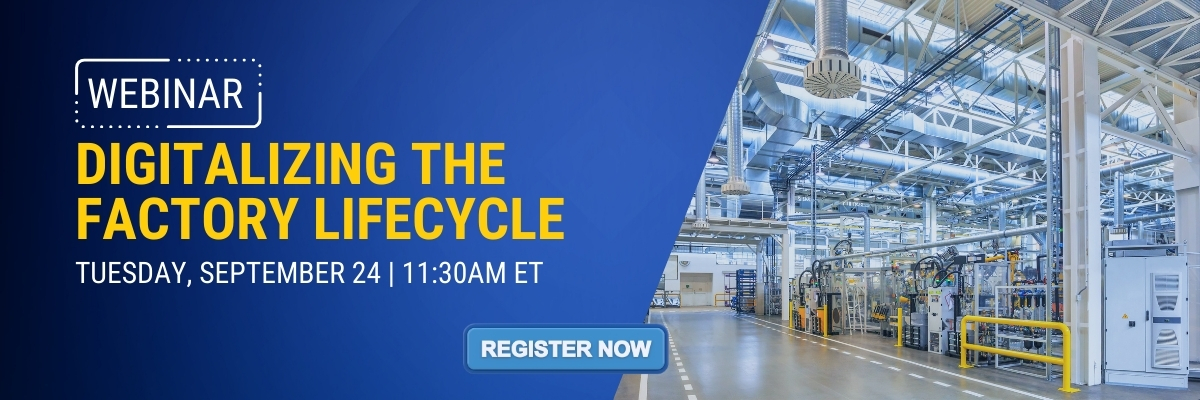

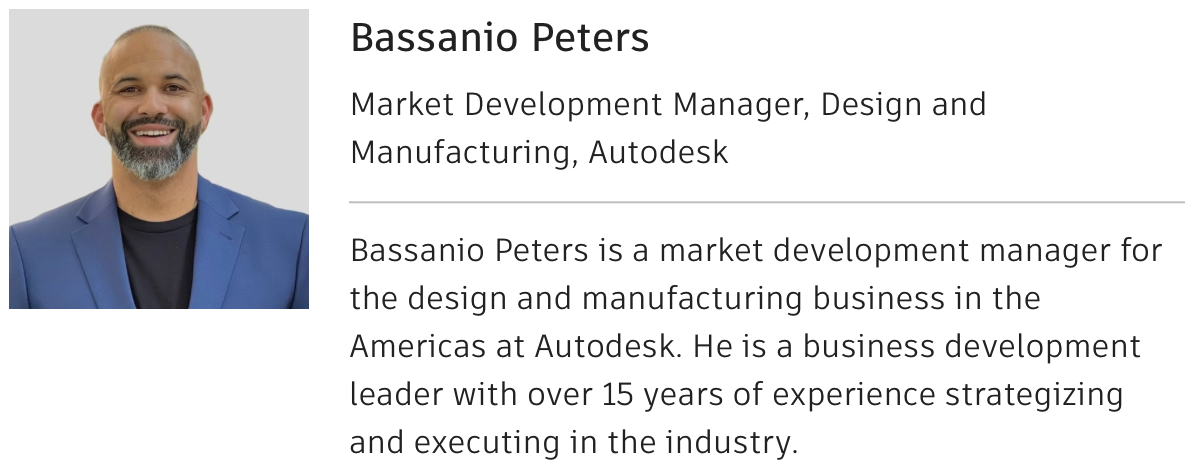 [post_title] => Digitalizing the Factory Lifecycle
[post_excerpt] =>
[post_status] => publish
[comment_status] => open
[ping_status] => open
[post_password] =>
[post_name] => factory-lifecycle-webinar
[to_ping] =>
[pinged] =>
[post_modified] => 2024-09-26 11:54:01
[post_modified_gmt] => 2024-09-26 15:54:01
[post_content_filtered] =>
[post_parent] => 0
[guid] => https://tech-clarity.com/?p=20613
[menu_order] => 0
[post_type] => post
[post_mime_type] =>
[comment_count] => 0
[filter] => raw
)
[8] => WP_Post Object
(
[ID] => 20596
[post_author] => 2574
[post_date] => 2024-09-06 09:00:30
[post_date_gmt] => 2024-09-06 13:00:30
[post_content] =>
[post_title] => Digitalizing the Factory Lifecycle
[post_excerpt] =>
[post_status] => publish
[comment_status] => open
[ping_status] => open
[post_password] =>
[post_name] => factory-lifecycle-webinar
[to_ping] =>
[pinged] =>
[post_modified] => 2024-09-26 11:54:01
[post_modified_gmt] => 2024-09-26 15:54:01
[post_content_filtered] =>
[post_parent] => 0
[guid] => https://tech-clarity.com/?p=20613
[menu_order] => 0
[post_type] => post
[post_mime_type] =>
[comment_count] => 0
[filter] => raw
)
[8] => WP_Post Object
(
[ID] => 20596
[post_author] => 2574
[post_date] => 2024-09-06 09:00:30
[post_date_gmt] => 2024-09-06 13:00:30
[post_content] => 
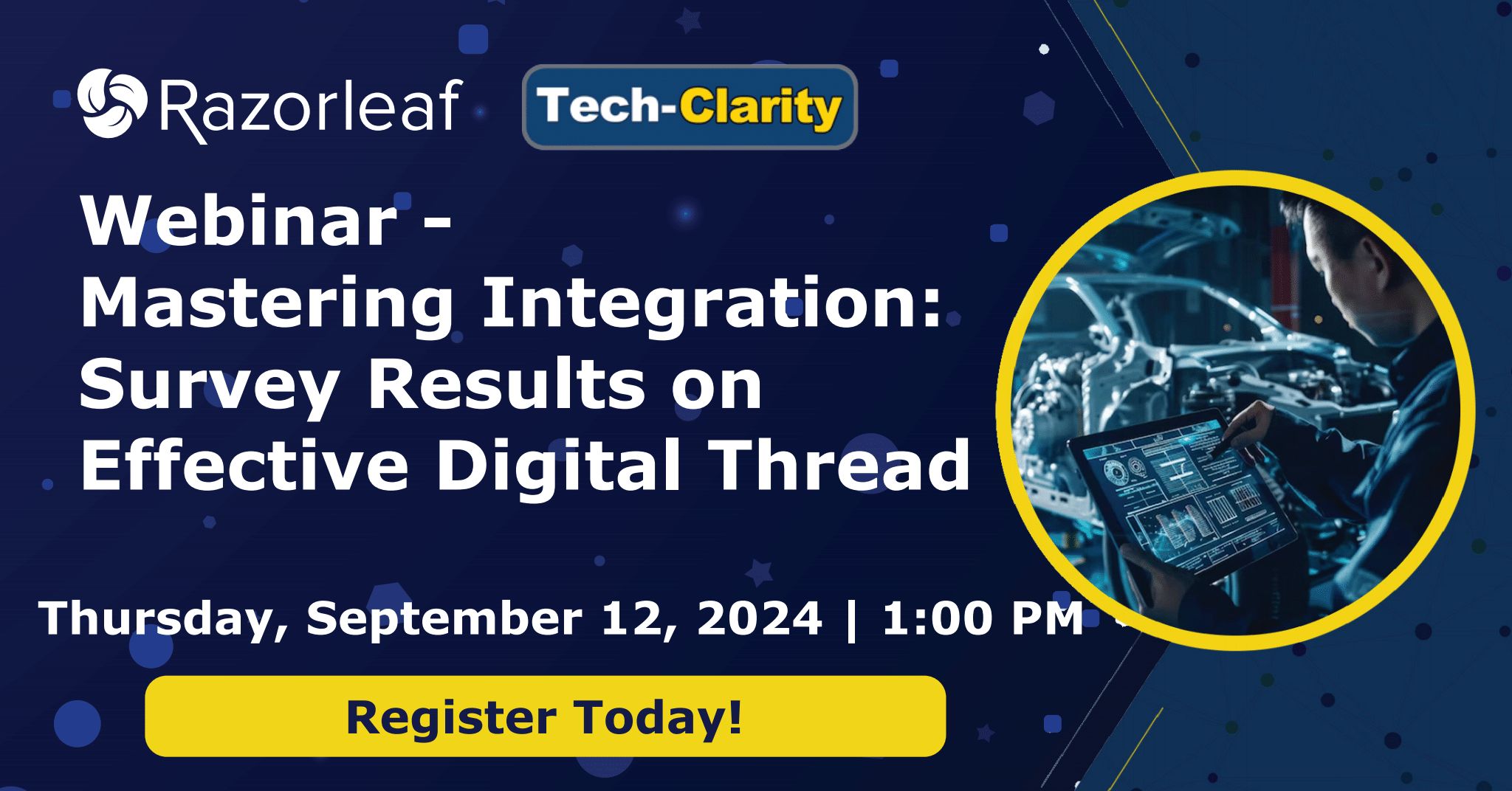

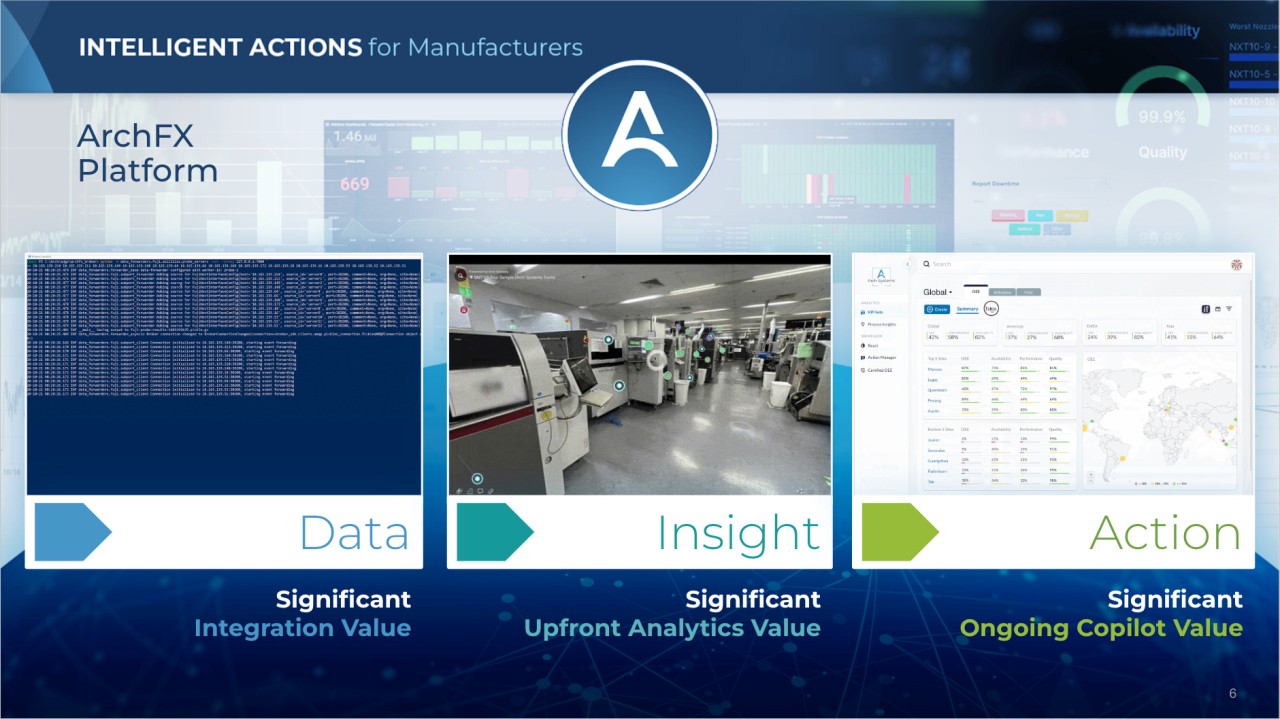 Value from Data
Value from Data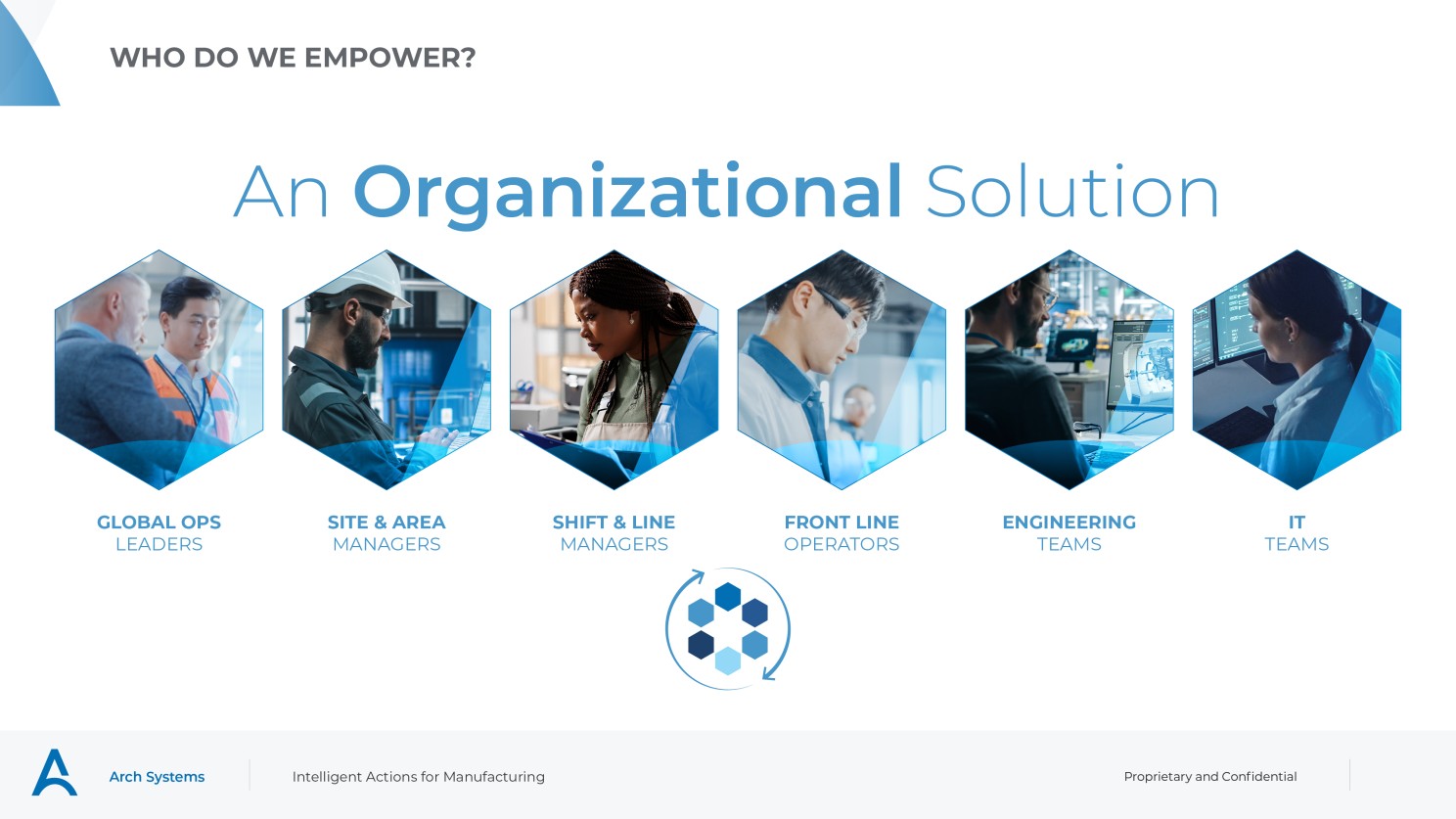
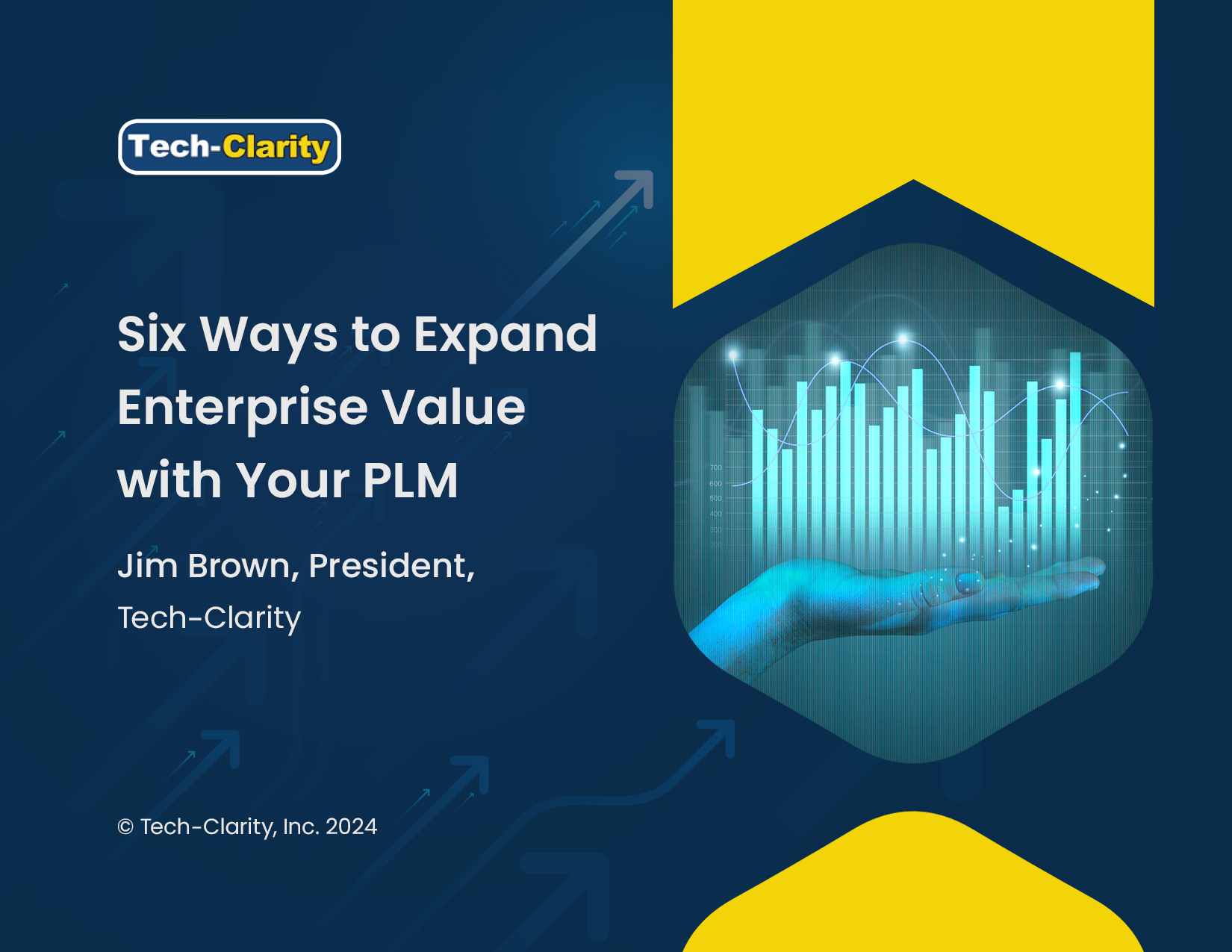 How can manufacturers get more value from PLM? Our research and experience show there are six ways for companies to grow PLM to enterprise level business value.
How can manufacturers get more value from PLM? Our research and experience show there are six ways for companies to grow PLM to enterprise level business value.
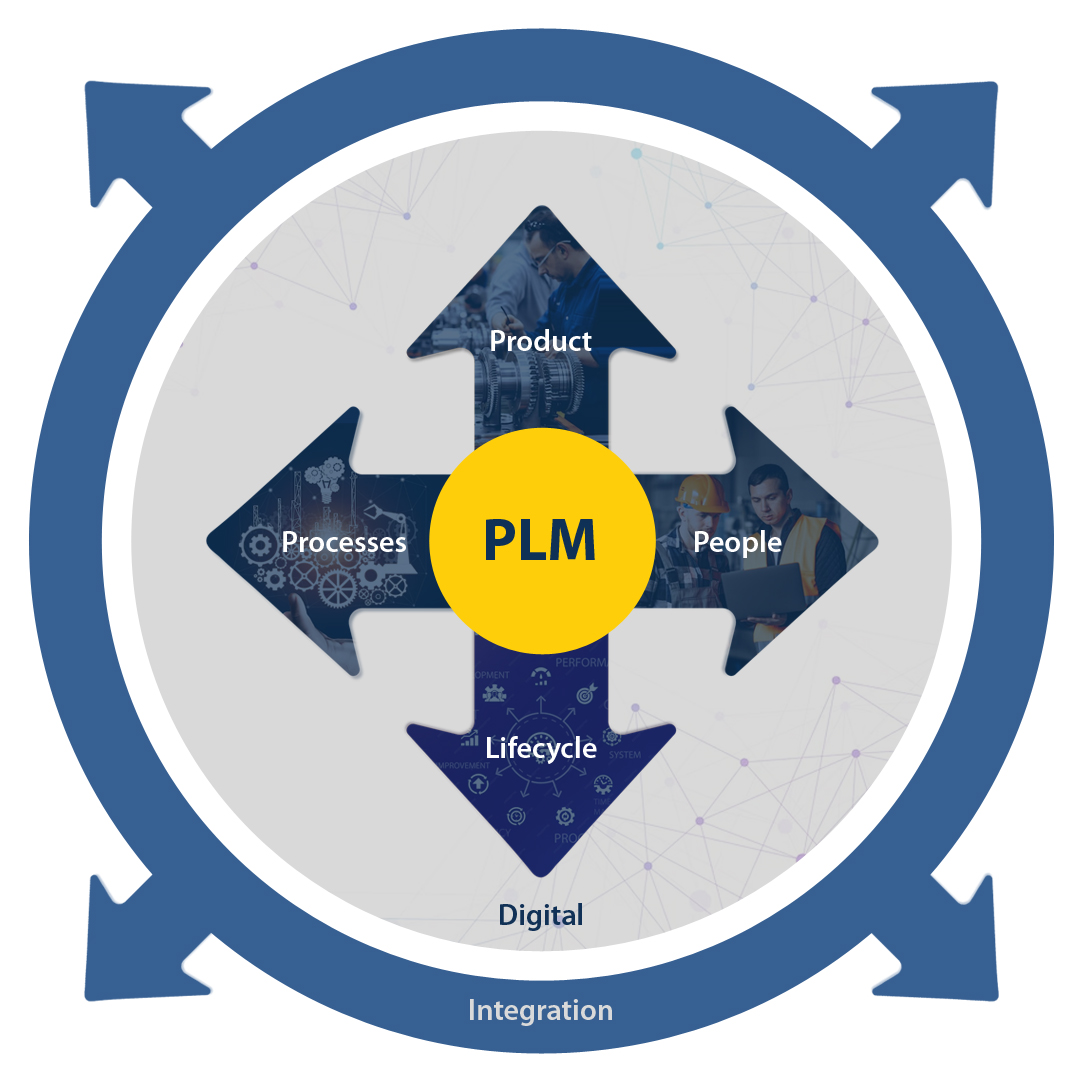 Executive Summary
Executive Summary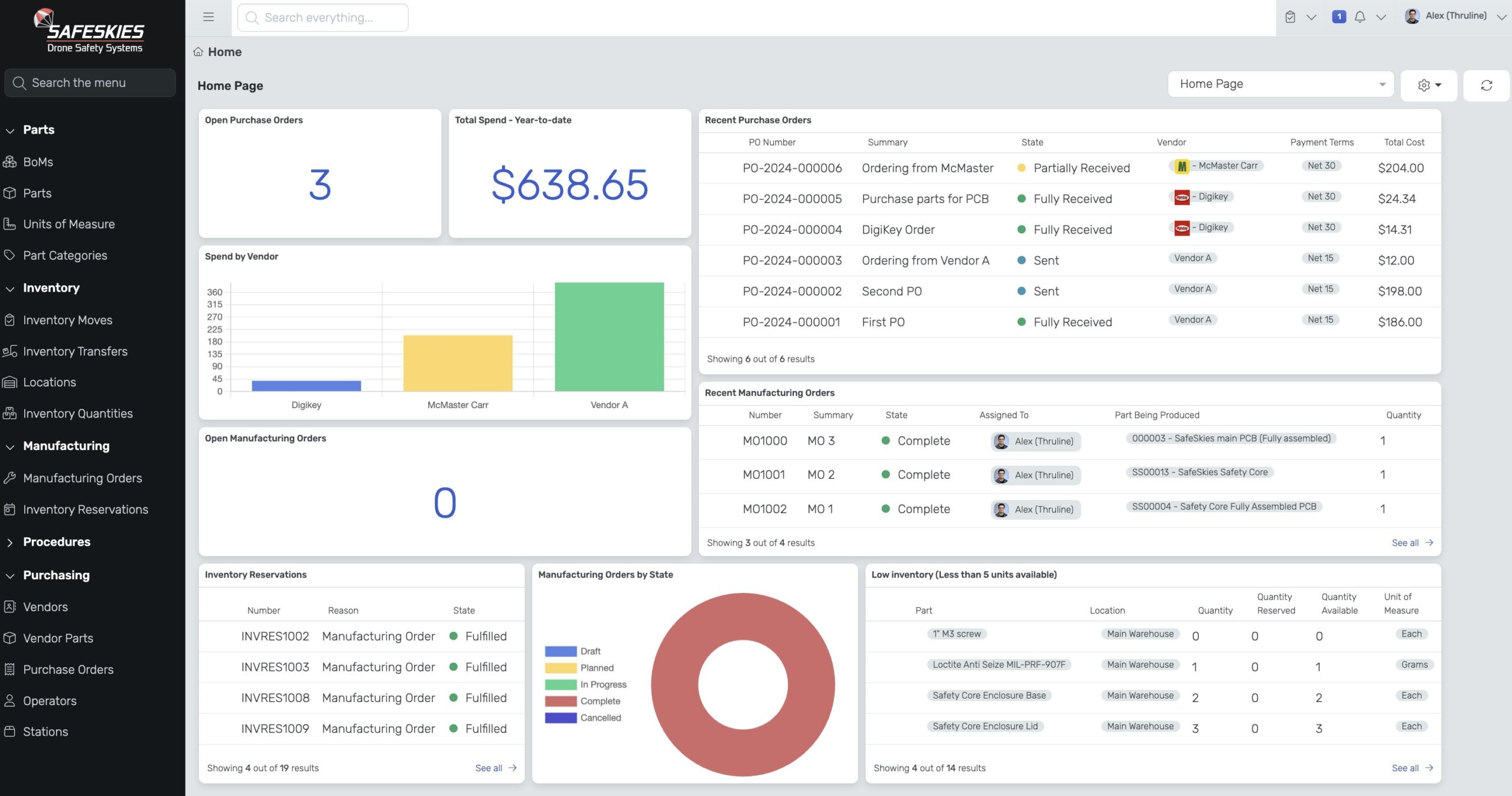 Better Software
Better Software
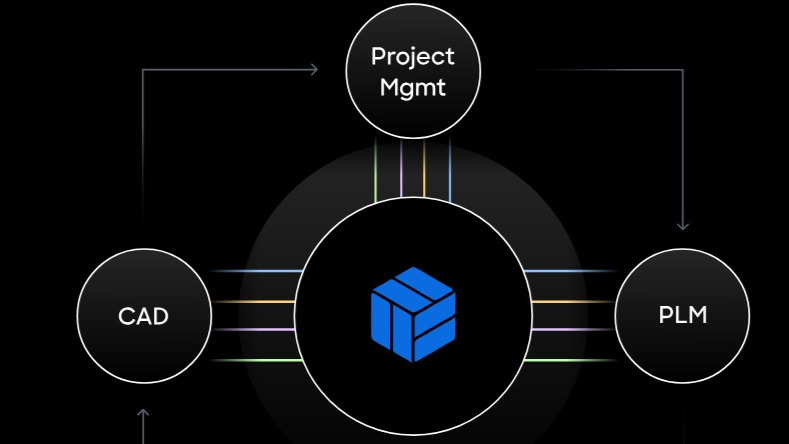 The System of Engagement Trend
The System of Engagement Trend
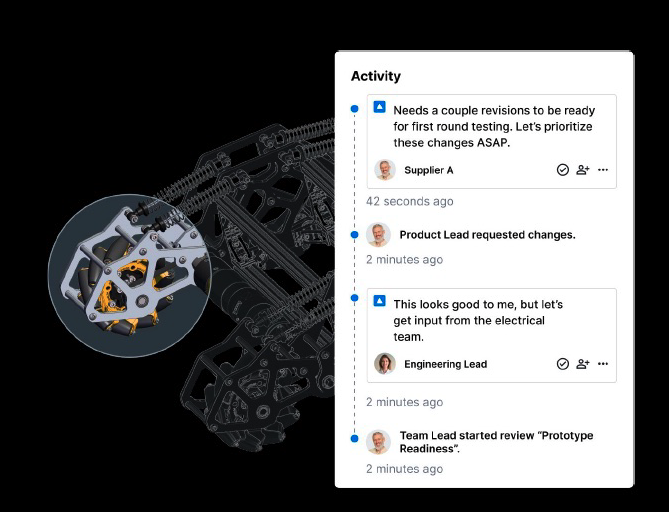

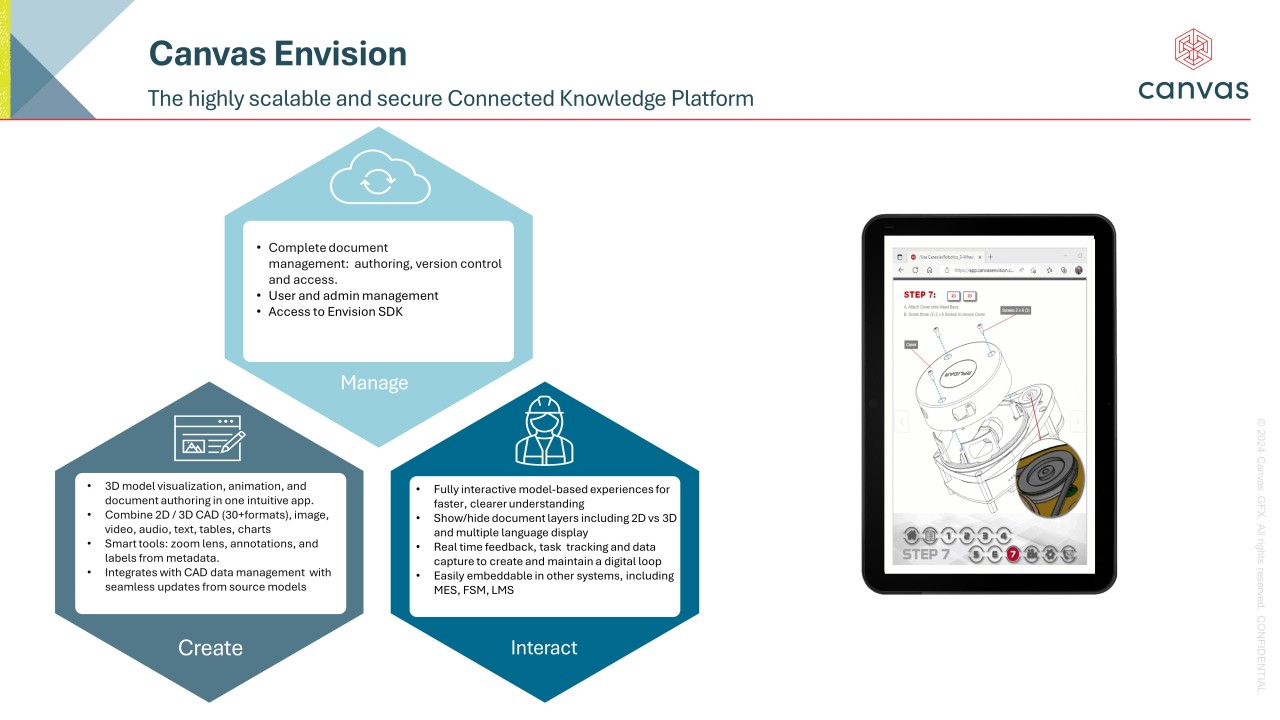 In our update briefing with
In our update briefing with 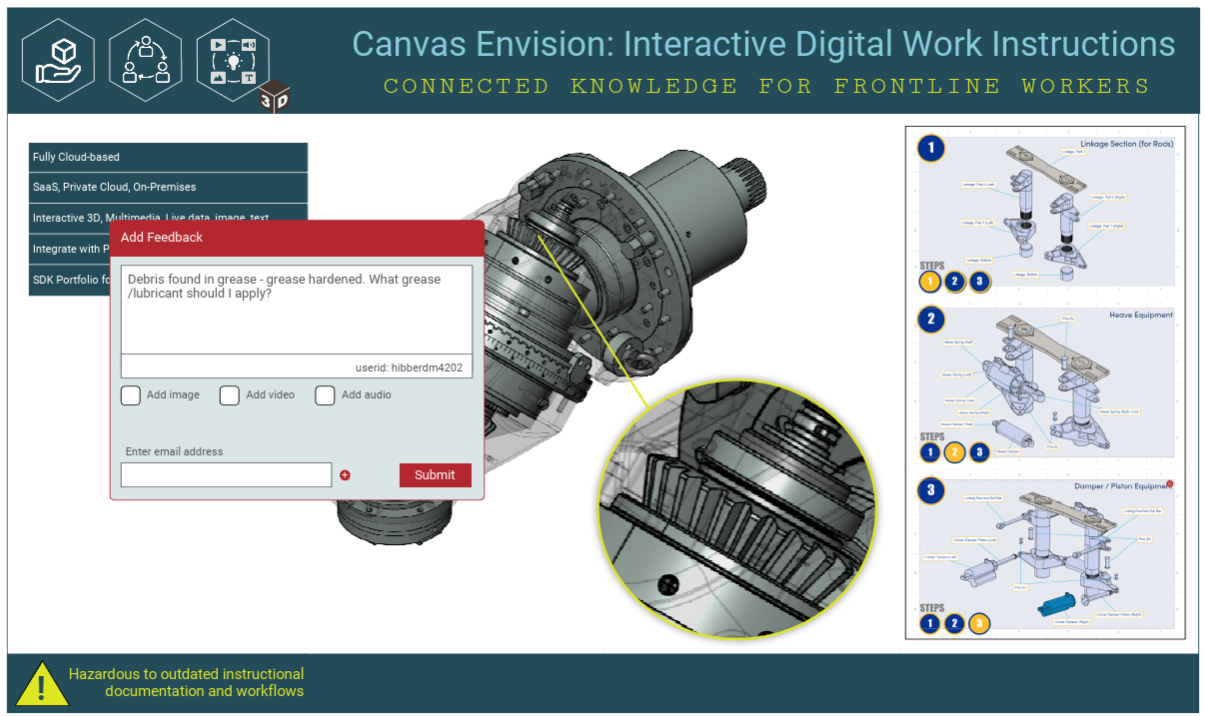 Thank you,
Thank you, 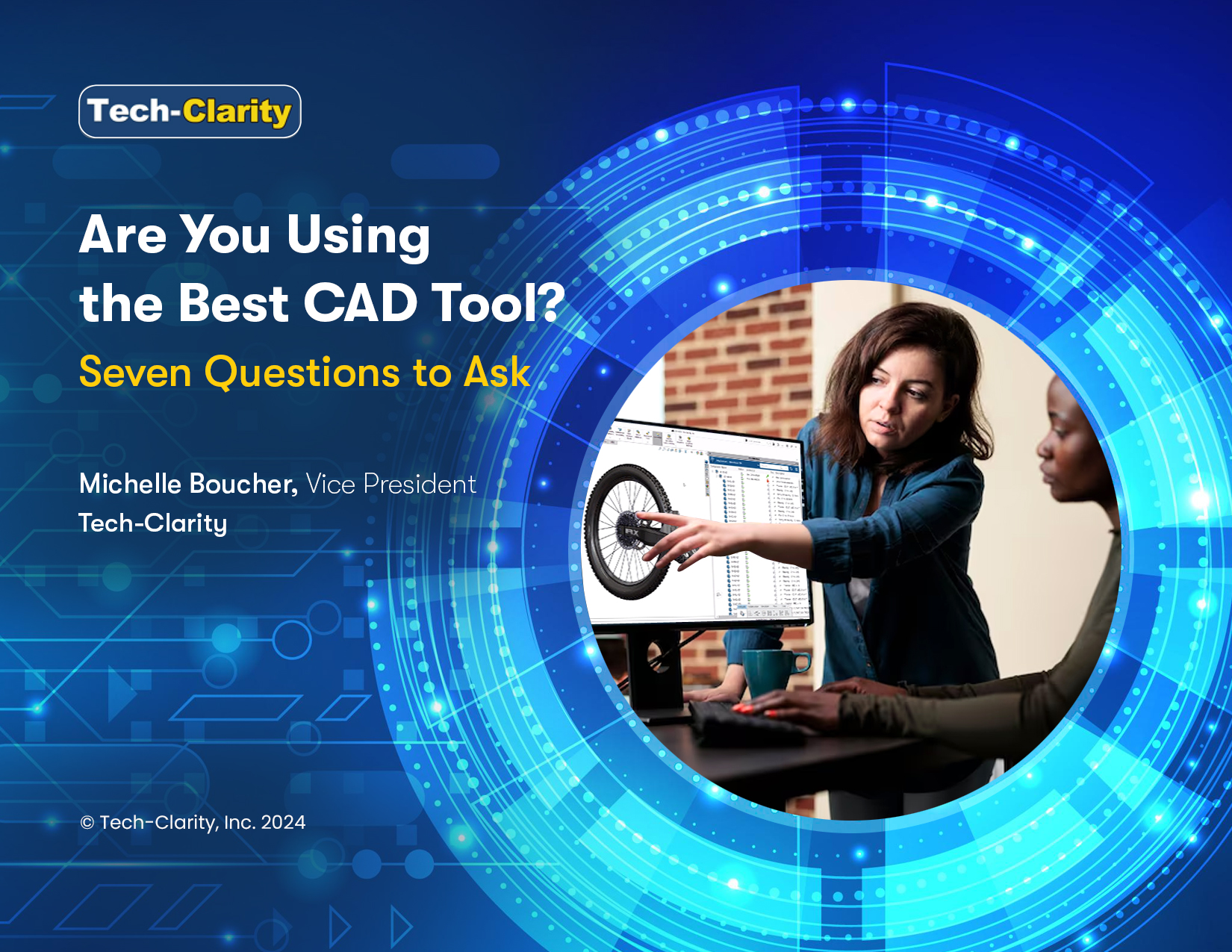 How do you know if your CAD tool will keep you competitive?
How do you know if your CAD tool will keep you competitive? Engineers face a lot of pressure to develop competitive products as quickly as possible. The best CAD tools can help engineers work smarter and focus on innovation. However, achieving the desired efficiencies to remain competitive may require a change in CAD tools. In fact, over the last three years, digital transformation - a key enabler for greater efficiency - has been the top driver for making a switch.
You can extend a CAD model’s value with digital processes and new technologies, including complementary design portfolio offerings. Overall, 99% of study respondents believe using innovation-enabling technology with CAD will help them achieve their goals for more competitive products. These technologies include simulation, digital transformation, Artificial Intelligence (AI), generative design, and the cloud. As companies look at new technology, 95% believe that AI will improve product development; AI opportunities for improvement range from automating tedious repetitive work to detecting errors.
Impact of Changing CAD
When companies make a CAD change, the productivity improvements are quite significant: 85% are satisfied with the ROI of the switch, with an even higher percentage (96%) of Top Performers satisfied. Top Performers’ higher level of satisfaction can be partly attributed to what they look for in a CAD solution.
Seven Questions
This research identified what Top Performing companies look for in a CAD tool. The findings revealed seven questions to help determine if you may benefit from switching CAD tools. Consider if a new solution may offer technological advancements that will support better engineering decisions and accelerate product development processes by asking these questions:
1. Can your CAD tool support good collaboration?
2. Does your CAD tool support the latest technology?
3. Is there a vision and current support for AI?
4. Is Engineering’s personal productivity optimized?
5. Does a complementary portfolio extend value beyond design?
6. Does your CAD tool overcome process bottlenecks?
7. Does your CAD vendor meet your needs?
Engineers face a lot of pressure to develop competitive products as quickly as possible. The best CAD tools can help engineers work smarter and focus on innovation. However, achieving the desired efficiencies to remain competitive may require a change in CAD tools. In fact, over the last three years, digital transformation - a key enabler for greater efficiency - has been the top driver for making a switch.
You can extend a CAD model’s value with digital processes and new technologies, including complementary design portfolio offerings. Overall, 99% of study respondents believe using innovation-enabling technology with CAD will help them achieve their goals for more competitive products. These technologies include simulation, digital transformation, Artificial Intelligence (AI), generative design, and the cloud. As companies look at new technology, 95% believe that AI will improve product development; AI opportunities for improvement range from automating tedious repetitive work to detecting errors.
Impact of Changing CAD
When companies make a CAD change, the productivity improvements are quite significant: 85% are satisfied with the ROI of the switch, with an even higher percentage (96%) of Top Performers satisfied. Top Performers’ higher level of satisfaction can be partly attributed to what they look for in a CAD solution.
Seven Questions
This research identified what Top Performing companies look for in a CAD tool. The findings revealed seven questions to help determine if you may benefit from switching CAD tools. Consider if a new solution may offer technological advancements that will support better engineering decisions and accelerate product development processes by asking these questions:
1. Can your CAD tool support good collaboration?
2. Does your CAD tool support the latest technology?
3. Is there a vision and current support for AI?
4. Is Engineering’s personal productivity optimized?
5. Does a complementary portfolio extend value beyond design?
6. Does your CAD tool overcome process bottlenecks?
7. Does your CAD vendor meet your needs?
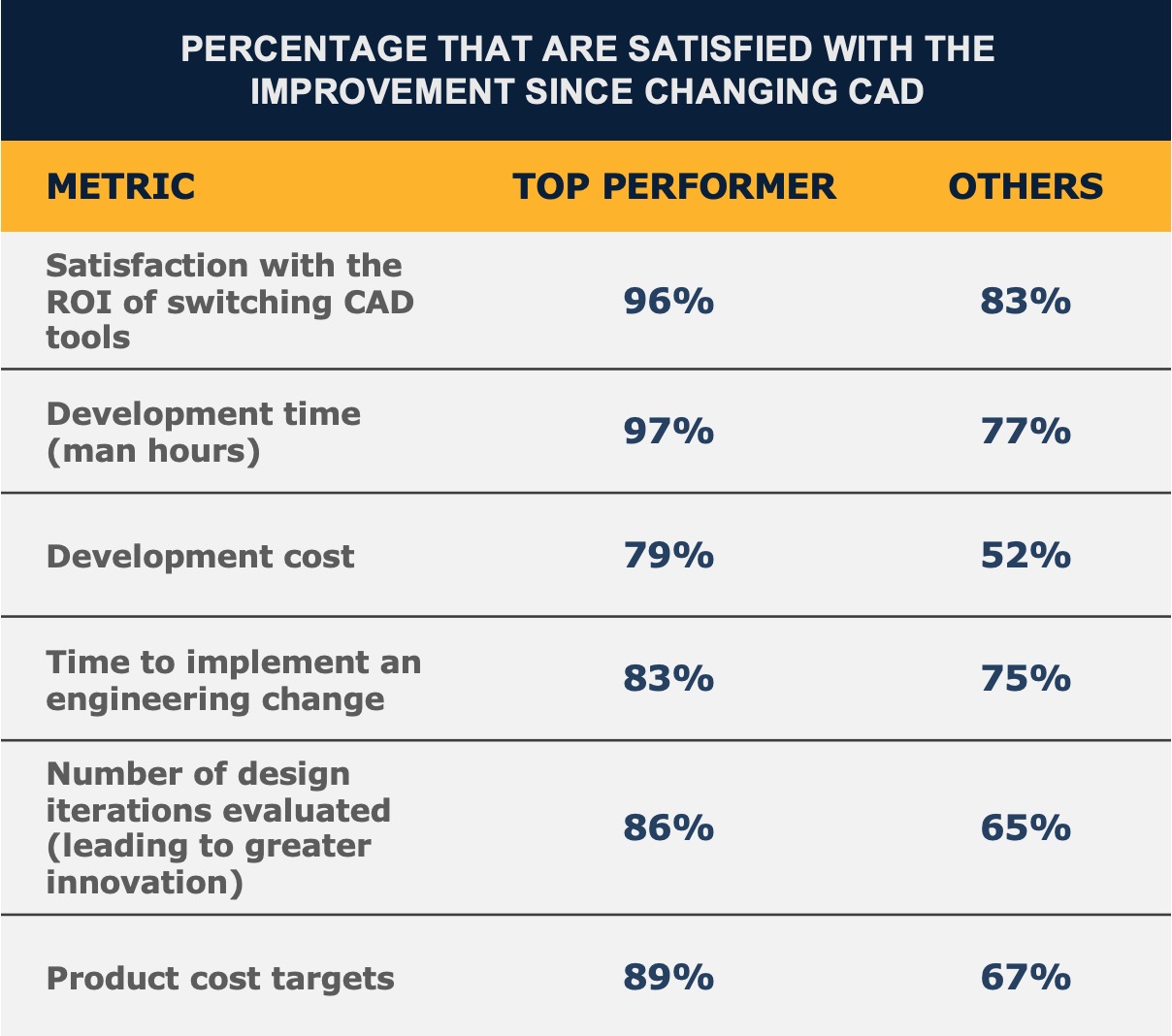 Top Performers’ Advantage
Top Performers enjoy even more benefits when they make a change. Some of this is due to what they look for in a CAD tool. Overall, they look for a tool that improves engineering efficiency while also benefiting the larger enterprise beyond engineering.
Top Performers’ Advantage
Top Performers enjoy even more benefits when they make a change. Some of this is due to what they look for in a CAD tool. Overall, they look for a tool that improves engineering efficiency while also benefiting the larger enterprise beyond engineering.

 The Pivotal Innovator SaaS platform systematically ensures strategy, execution, and innovation work together. Most solution providers focus on just one element of this overall value growth system. Execution of current value is the most common focus for transactional and process software applications. Software such as ERP, PLM, SCM, and CRM aim to ensure things happen reliably in the current state. The Pivotal Innovator focuses on transforming to a desired future state, with closed-loop feedback among strategy, execution, and innovation.
The Pivotal Innovator SaaS platform systematically ensures strategy, execution, and innovation work together. Most solution providers focus on just one element of this overall value growth system. Execution of current value is the most common focus for transactional and process software applications. Software such as ERP, PLM, SCM, and CRM aim to ensure things happen reliably in the current state. The Pivotal Innovator focuses on transforming to a desired future state, with closed-loop feedback among strategy, execution, and innovation.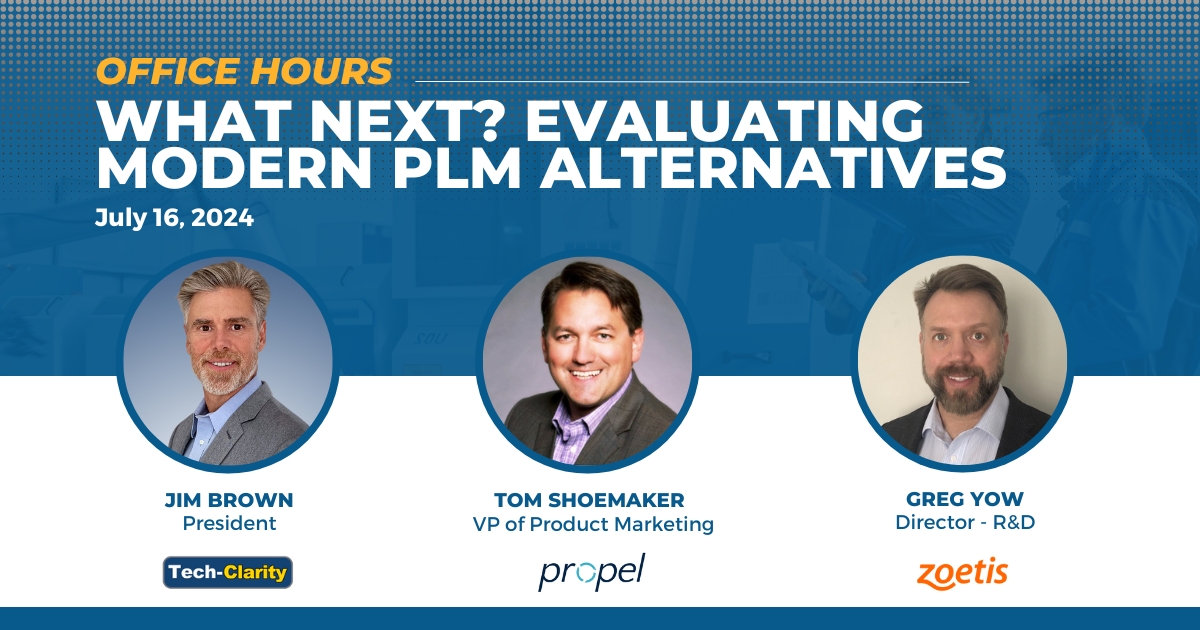
 Can you shorten the time to value (T2V) for MES? In a recent briefing, Julie Fraser came to an understanding that
Can you shorten the time to value (T2V) for MES? In a recent briefing, Julie Fraser came to an understanding that 

